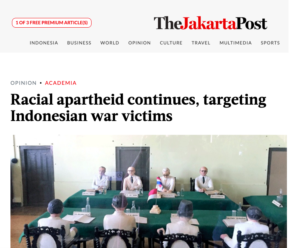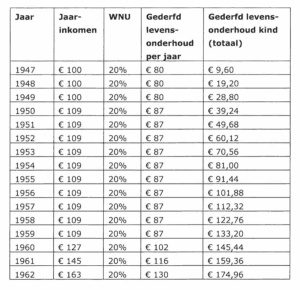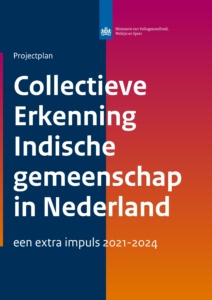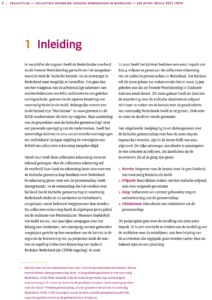Racial apartheid continues, targeting Indonesian war victims
The Jakarta Post, February 10, 2022, By: Yanuar Pribadi
[This article was initially written in Dutch and submitted to various Dutch newsoutlets, such as Volkskrant, NRC, Trouw, Het Parool, De Groene Amsterdammer, but they all rejected it]
 In October 2021, under the banner of “collective recognition”, the Dutch government announced that in the coming four years, they would allocate 20.4 million euro (US$23.36 million) in a show of appreciation for the Indische gemeenschap (Indies community) and to highlight their special place in Dutch society.
In October 2021, under the banner of “collective recognition”, the Dutch government announced that in the coming four years, they would allocate 20.4 million euro (US$23.36 million) in a show of appreciation for the Indische gemeenschap (Indies community) and to highlight their special place in Dutch society.
The Indies community consists of Indo-Dutch people whose family history is linked to the colonial occupation of Indonesia. They are multi-ethnic, non-white Dutch citizens with Indonesian roots identified as Indisch (Indies). The term relates to the name that the Dutch colonizers gave to the large territory that they occupied: Nederlands-Indië (the Dutch East Indies).
The ancestors of the Indisch people did not support the Republic of Indonesia, which was born as an independent state on Aug. 17, 1945. That is why they moved to the Netherlands, and it explains why their descendants never identify themselves as Indonesians. Even worse, the people who call themselves Indisch are often offended when white Dutch people confuse them for Indonesians.
To be clear, this expensive “collective recognition” is not meant for me, an Indonesian living in the Netherlands. In an official letter, the Dutch government stated that it is about the acknowledgment of the suffering that Indo-Dutch people went through during, and after, World War II. This gesture is totally misplaced and inappropriate: The Indisch identity is a very colonial one. The huge amount of money proves the Dutch are not condemning the colonial past, they are honoring it.

The sum is in stark contrast to the amount that Indonesian war victims received. Starting in 2006, the Committee of Dutch Honorary Debt (K.U.K.B.) won a series of lawsuits against the Dutch state. In the case of Indonesian widows of Indonesian men who were executed by the Dutch Army between 1945-1949, the court in The Hague ruled that the state had to pay each of them 20,000 euro in damages. But since children of victims also started lawsuits, the Dutch court ordered the payment of embarrassingly low amounts. The lowest amount paid was even 123.48 euro!
The huge difference between 20.4 million euro and 123.48 euro reveals the true face of the Netherlands: a face hidden in darkness with features of apartheid and racism. By this expensive gesture, once again, the traitors (Indo-Dutch) are rewarded by the perpetrators (white Dutch) for their loyalty.
Just like in the past, the Dutch government gives their most loyal helpers a pat on the back, while the victims of colonialism are dismissed and ignored. It shows that little has changed since the colonial occupation of Indonesia, where Indo-Europeans were placed higher in the racial hierarchy than indigenous Indonesians, who were called inlanders, a racial slur.
This has everything to do with the three-layered apartheid system that the Dutch colonial authority implemented in Indonesia. This system was unique, as it created a special class of Indisch gelijkgestelden (Indies legally assimilated). The highest legal category of Dutch colonial society consisted of both white and brown people. Not all Indos, people of mixed European-Asian descent, were admitted to this upper class. Decisive in this system of racial segregation was the choice of the father: He had to decide whether he accepted his mixed-race off-spring or not. If he did, then his brown children would become, at least legally, Europeans.
Through this system of racial segregation, a separate group emerged: Indo-Europeans. Apart from a few exceptions, the majority of the Indisch community in the Netherlands are mostly descendants of this assimilated class of brown Europeans. The collective recognition from the Dutch government is solely directed at this group.

Basically, the Dutch government invests such a huge amount of money to keep the Indisch colonial identity alive. Shamelessly, with these millions of euros, the culture and heritage of a colonial, racist category is going to be celebrated in Dutch society once more.
Besides, the Indisch heritage is all about cultural appropriation too. In the Netherlands, the impression has been made that traditional dishes such as gado-gado and nasi goreng are typically Indisch dishes. But they are not Indisch, they are Indonesian! So what do people mean when they want to preserve the “Indisch culture”? Do they want to celebrate the colonial culture of apartheid and racial segregation?
There is a contradiction too. While Indo-Dutch people are proudly appropriating cultural heritage that belongs to Indonesia, they are often offended when white Dutch people confuse them for Indonesians.
Although it may be understandable that they, as a mixed “in-between” group, feel neither Dutch nor Indonesian, I observed that they feel more Dutch than Indonesian. In other words this feeling of being “mixed” is not in balance. The Dutch colonial view of history is more important to them than the way we think in Indonesia. This goes back to the colonial indoctrination that “inlanders” are less worthy than them.
Still, they do not take us, Indonesians, into account as people who have a voice too and who naturally feel insulted by the glorification of a racist category from the past. On one hand Indisch people in the Netherlands appropriate parts of our national heritage, the food, the batik, the music, while on the other hand they largely ignore our view of colonialism as a system of oppression.
The idea of being mixed is how Indo-Dutch people often explain their Indisch identity. Yet, they tend to gloss over the highly privileged position of their ancestors. The fact that they were assimilated, enjoying many rights and privileges, explains why most of them did not support the Republic of Indonesia and why they ended up in the Netherlands afterward. In other words: Indisch stands for much more than just being from both worlds. It is one thing to acknowledge that Indo-Dutch people have multi-ethnical backgrounds, but it is another thing to cultivate the legal racist category that is historically linked to it.
To conclude, the “collective recognition” of the Dutch government shows that the old mentality is still deeply rooted in this country of robbers and thieves. This mentality has been institutionalized in all layers of Dutch society.
It is about time for the Dutch to come to terms with their centuries of colonialism of Indonesia. They should start with the acknowledgement that the illegal occupation of the Indonesian archipelago was a criminal act. The Indonesian people who suffered from this occupation deserve to be paid much higher amounts. At least they should equal the “collective recognition” of €20.4 million.
The colonial perspective should be removed and destroyed from the root. Not only do we deserve an equal treatment but we also need justice for the crimes that were committed, in line with the legal battles of the KUKB. Apartheid must disappear once and for all and history must be rewritten.
It all begins and ends with the question that KUKB chairman Jeffry Pondaag repeatedly asks: “Where did the Netherlands get the right to consider an area 18,000 kilometers away as its property?”
***
The writer is the treasurer of the Committee of Dutch Honorary Debt (KUKB)
For Dutch followers, download here the announcement of the Dutch government ![]()
See also:


